A False-color Image Of The Mid-infrared Emission From The Great Galaxy In Andromeda, As Seen By Nasa’s

A false-color image of the mid-infrared emission from the Great Galaxy in Andromeda, as seen by Nasa’s WISE space telescope.
Credit: NASA/JPL-Caltech/WISE Team
More Posts from Xyhor-astronomy and Others

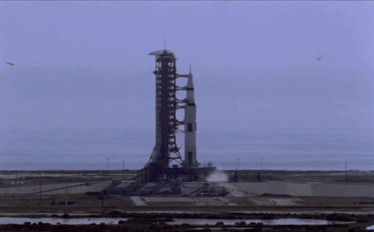
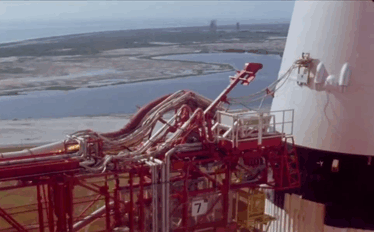
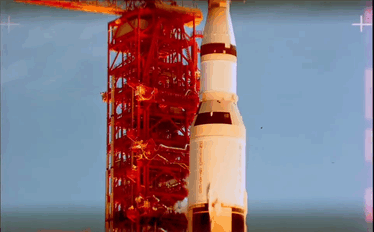
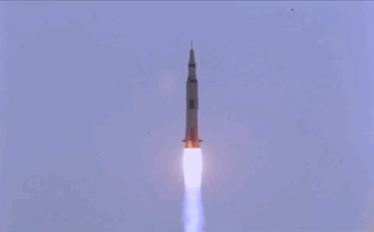
Apollo 11 Launch
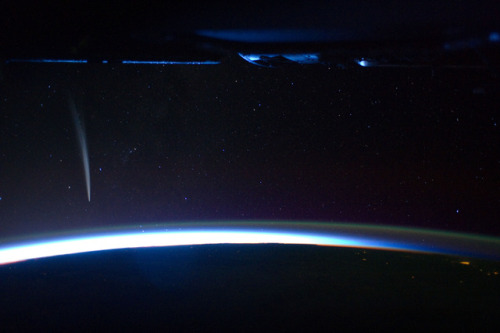
Comet Lovejoy is visible near Earth’s horizon in this nighttime image photographed by NASA astronaut Dan Burbank, Expedition 30 commander, onboard the International Space Station on Dec. 21, 2011.
Image credit: NASA

A slow-motion animation of the Crab Pulsar taken at 800 nm wavelength (near-infrared) using a Lucky Imaging camera from Cambridge University, showing the bright pulse and fainter interpulse.
Credit: Cambridge University Lucky Imaging Group

Black Holes are not so Black (Part 3) - Gravitational Waves
The existence of Gravitational Waves have been confirmed. But you probably have heard that. In this post, we will break down this profound discovery into comprehend-able chunks.
This is going to be a amazing journey. Ready ?
Redefining Gravity
When we usually talk of Gravitation we are bound to think like Newton, where objects are assumed to exerting a force upon each other.
Like imaginary arrows of force in space. But this picture, although good for high school crumbled, with the advent of Einstein’s theory of Relativity.

What is the Space-Time Fabric?
Think of space-time fabric as an actual cloth of fabric. ( An analogy )
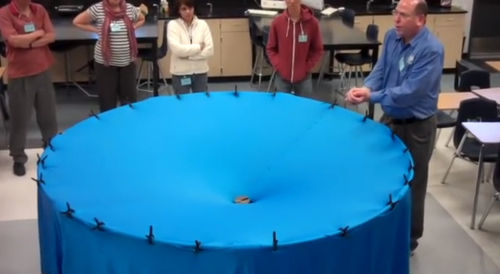
When you place an object on the fabric, the cloth curves. This is exactly what happens in the solar system as well.

The sun with such a huge mass bends the space-time fabric. And the earth and all the planets are kept in orbit by following this curvature that has been made by the sun.
Attributing to the various masses of objects, the way they bend this fabric also varies.
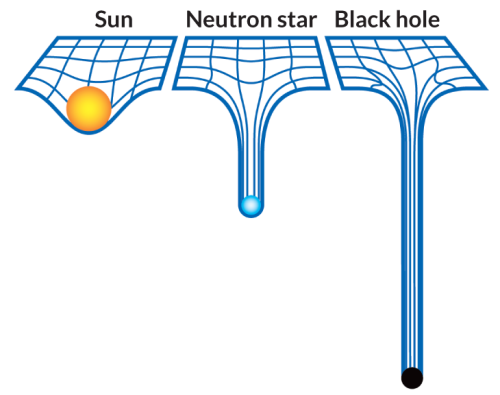
What are Gravitational Waves?
If you drop an object in a medium such as water, they produce ripples that propagate as waves through the medium.

Similarly, Gravitational waves are ripples in space-time fabric produced when you drag heavy objects through space time.
And the nature of these waves is that they don’t require a medium to propagate.
How do you make one?
Everything with mass/energy can create these waves.

Source
Two persons dancing around each other in space too can create gravitational waves. But the waves would be extremely faint.
You need something big and massive accelerating through space-time in order to even detect them.

And orbiting binary stars/black holes are valuable in this retrospect.
How can you detect them?
Let’s turn to the problem to detecting them assuming you do find binary stars/black-holes in the wondrous space to suite your needs.
Well, for starters you cannot use rocks/ rulers to measure them because as the space expands and contracts, so do the rocks. ( the distances will remain same in both the cases )

Here’s where the high school fact that the speed of Light is a constant no matter what plays an important and pivotal role.
If the space expands, the time taken for light to reach from A to B would be longer. And if it contracts, the time taken for it to reach from A to B would be smaller.

PC: PHDComics
By allowing the light waves from the contraction and expansion to interfere with each other, such as done in any interferometry experiment we can detect the expansion or contraction. Voila!
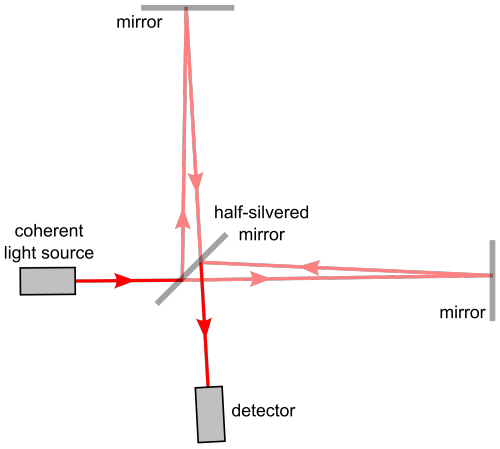
And this is exactly what they did! ( on a macroscopic level ) at LIGO (Laser Interferometer Gravitational-Wave Observatory)
14 September 2015

Two Black Holes with masses of 29 and 36 solar masses merged together some 1.3 Billion light years away.
Two Black Holes colliding is the header animation of the ‘Black Holes are not so Black Series’, in case if you haven’t noticed.

The merger of these two black holes results in the emission of energy equivalent to 3 solar masses as Gravitational Waves.
This signal was seen by both LIGO detectors, in Livingston and Hanford, with a time difference of 7 milliseconds.
And with the measurement of this time difference, physicists have pronounced the existence of Gravitational Waves.
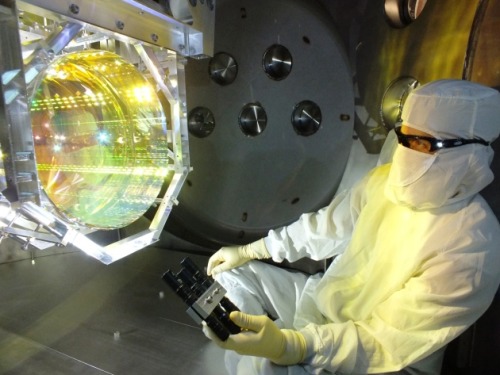
Source
All this is most certainly easily said than done and requires meticulous and extensive research, not to mention highly sensitive instruments.
Had they not have measured this time difference, we might have had to wait for the merger for more massive black holes to collide and maybe even build more sensitive instruments to detect these waves.
And Einstein predicted this a 100 years back!
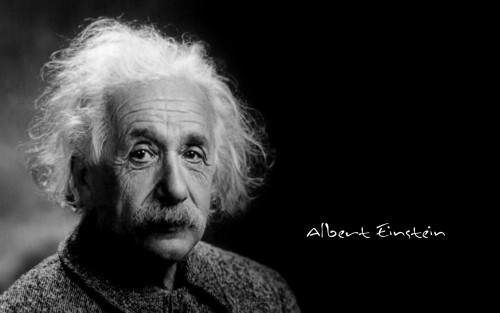
Mind Blown!
Note: Hope you are able to understand and appreciate the profundity of the discovery done by mankind.
** All animations used here are merely for Educational purposes. If you have any issues, please write to us at : 153armstrong@gmail.com

Low genetic diversity is a problem when you’re founding a new colony, so how would we avoid that on another planet?
The NASA Village
Today in the NASA Village… Making More with Less

Stacey Boland works at NASA’s Jet Propulsion Laboratory (JPL) on missions that use remote sensing instruments for Earth observation. From space, we can learn so much about our changing environment here on Earth.
Maximizing science research requires finding creative and cost effective ways to do it! Her team developed the ISS-RapidScat instrument using left over equipment NASA had in storage from a program launched in the 1990’s. ISS-RapidScat is an external payload mounted to the outside of the Columbus module, part of the International Space Station. ISS-RapidScat measures ocean wind speed and direction to help track tropical cyclones and hurricanes. Stacey’s team was able to get a functioning piece of hardware for about a tenth the cost of a traditional “small” Earth science mission.
Stacey said, “It wasn’t easy, but it was worth it! Working in the space program doesn’t require perfection - but it does require passion and hard work! We work as a team here at NASA and everyone’s role is important. We rely on each other to do our best, regardless of what part of the mission is “ours.” All the parts need to work together for it to be a success and that takes teamwork and good communication!”
Stacey’s story represents how being creative in the NASA Village can really make a difference!

Where did Stacey get her hunger for space? “When I was growing up, my dad and I would learn about each shuttle mission and then watch launches on TV together. It was fun learning about science and exploration together. Now, as a parent, I’m continuing on that tradition with my son”
“I was able to watch the SpaceX-4 launch in person with my mom, dad, husband, and son”, Stacy said. “It was absolutely incredible to share that experience with them. My son still talks about it and has been practicing drawing rockets ever since. He often asks when we can go back to Florida to see another one!”
Experiencing a rocket launch in person is amazing. Feeling the sound waves from the engines push against your body is quite a rush. And when it is hardware you helped create, on its way into space, it makes that experience even more special.
Next time on the NASA Village… A visit to the NASA Village inspires a lifelong career.
Do you want more stories? Find our NASA Villagers here!



(Causus maculatus) - Common names include forest rhombic night adder, West African night adder and spotted night adder.
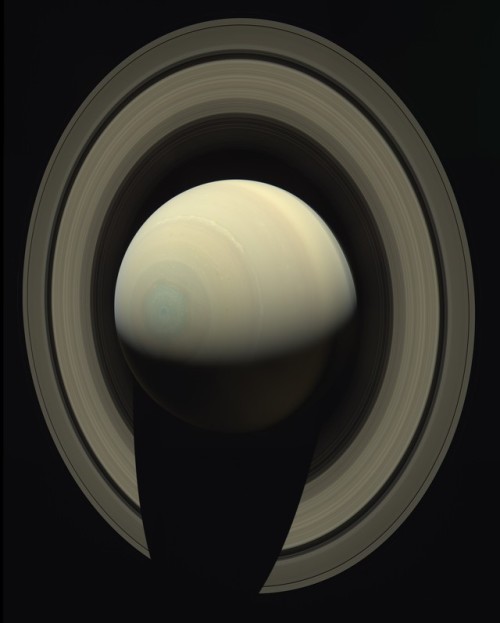
Image of Saturn taken by the Cassini spacecraft in 2013
Image credit: NASA / JPL-Caltech
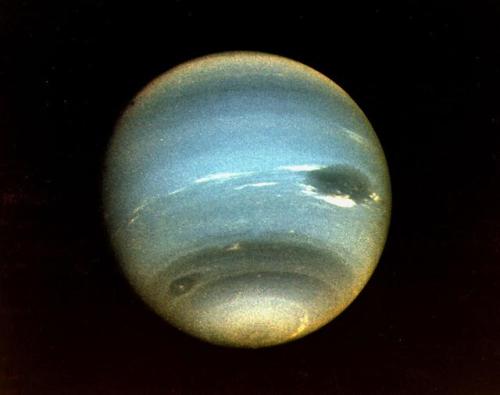
Image of the planet Neptune seen by the space probe Voyager 2
Image credit: NASA/JPL
-
 jameschildress reblogged this · 3 weeks ago
jameschildress reblogged this · 3 weeks ago -
 jameschildress liked this · 3 weeks ago
jameschildress liked this · 3 weeks ago -
 screamingwombatgirl liked this · 3 weeks ago
screamingwombatgirl liked this · 3 weeks ago -
 the-abandoned-bat-plea reblogged this · 3 weeks ago
the-abandoned-bat-plea reblogged this · 3 weeks ago -
 paleconstellationss liked this · 3 weeks ago
paleconstellationss liked this · 3 weeks ago -
 awarmyellowlight reblogged this · 3 weeks ago
awarmyellowlight reblogged this · 3 weeks ago -
 unsuredefleur reblogged this · 3 weeks ago
unsuredefleur reblogged this · 3 weeks ago -
 unsuredefleur liked this · 3 weeks ago
unsuredefleur liked this · 3 weeks ago -
 myboardforastetyks reblogged this · 4 weeks ago
myboardforastetyks reblogged this · 4 weeks ago -
 iwannarunaway-13 liked this · 4 weeks ago
iwannarunaway-13 liked this · 4 weeks ago -
 chojrak-making-things liked this · 1 month ago
chojrak-making-things liked this · 1 month ago -
 cabaret-anonyme liked this · 2 months ago
cabaret-anonyme liked this · 2 months ago -
 tangledindream reblogged this · 4 months ago
tangledindream reblogged this · 4 months ago -
 alienssapiens reblogged this · 4 months ago
alienssapiens reblogged this · 4 months ago -
 alienssapiens liked this · 4 months ago
alienssapiens liked this · 4 months ago -
 cliriqstars reblogged this · 4 months ago
cliriqstars reblogged this · 4 months ago -
 tangledindream liked this · 6 months ago
tangledindream liked this · 6 months ago -
 sundayhardcorematinee reblogged this · 11 months ago
sundayhardcorematinee reblogged this · 11 months ago -
 zurgy-space reblogged this · 11 months ago
zurgy-space reblogged this · 11 months ago -
 zurgy liked this · 11 months ago
zurgy liked this · 11 months ago -
 darkempressrising liked this · 1 year ago
darkempressrising liked this · 1 year ago -
 sundayhardcorematinee liked this · 1 year ago
sundayhardcorematinee liked this · 1 year ago -
 mopoki reblogged this · 1 year ago
mopoki reblogged this · 1 year ago -
 subjectaash-maxx liked this · 1 year ago
subjectaash-maxx liked this · 1 year ago -
 demichrising liked this · 1 year ago
demichrising liked this · 1 year ago -
 moorewr liked this · 1 year ago
moorewr liked this · 1 year ago -
 notknowncryptid liked this · 1 year ago
notknowncryptid liked this · 1 year ago -
 ravexandxlust liked this · 1 year ago
ravexandxlust liked this · 1 year ago -
 pizzacrustdisposal reblogged this · 1 year ago
pizzacrustdisposal reblogged this · 1 year ago -
 e-de-emperatriz liked this · 1 year ago
e-de-emperatriz liked this · 1 year ago -
 des-conectado reblogged this · 1 year ago
des-conectado reblogged this · 1 year ago -
 clefairysbussy liked this · 1 year ago
clefairysbussy liked this · 1 year ago -
 saraaaaaaaaaaaa liked this · 2 years ago
saraaaaaaaaaaaa liked this · 2 years ago -
 emeraldsurfffer liked this · 2 years ago
emeraldsurfffer liked this · 2 years ago -
 kitsuragis reblogged this · 2 years ago
kitsuragis reblogged this · 2 years ago -
 gordoonblog reblogged this · 2 years ago
gordoonblog reblogged this · 2 years ago -
 susidark liked this · 2 years ago
susidark liked this · 2 years ago -
 schwegler reblogged this · 2 years ago
schwegler reblogged this · 2 years ago -
 artillery-of-the-hills liked this · 2 years ago
artillery-of-the-hills liked this · 2 years ago -
 sailingpaper reblogged this · 2 years ago
sailingpaper reblogged this · 2 years ago -
 sailingpaper liked this · 2 years ago
sailingpaper liked this · 2 years ago -
 tangentiallyrelated liked this · 2 years ago
tangentiallyrelated liked this · 2 years ago -
 decilla liked this · 2 years ago
decilla liked this · 2 years ago -
 schwegler liked this · 2 years ago
schwegler liked this · 2 years ago -
 cowwatcher liked this · 2 years ago
cowwatcher liked this · 2 years ago
For more content, Click Here and experience this XYHor in its entirety!Space...the Final Frontier. Let's boldly go where few have gone before with XYHor: Space: Astronomy & Spacefaring: the collection of the latest finds and science behind exploring our solar system, how we'll get there and what we need to be prepared for!
128 posts